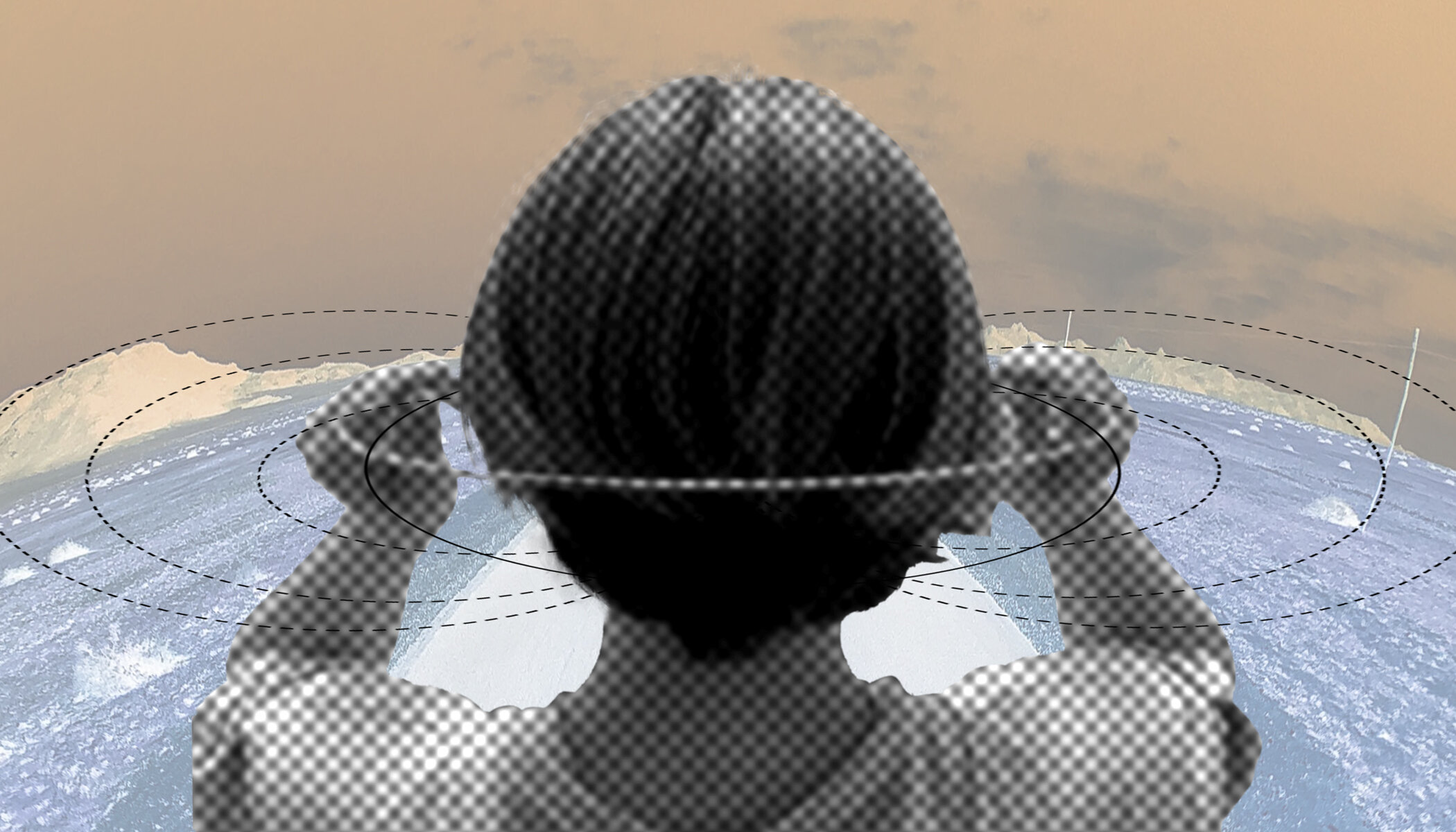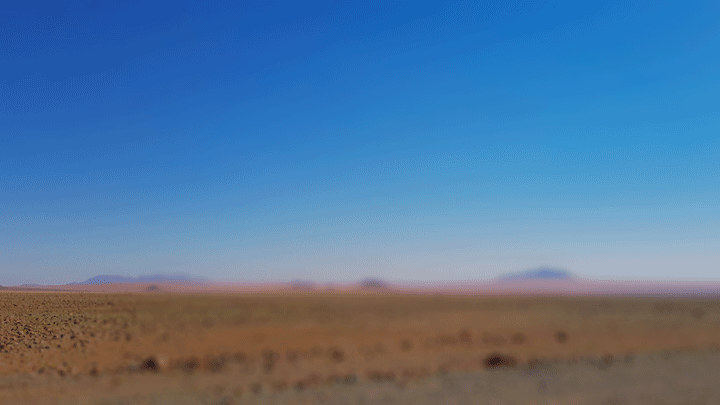Eyes on the Horizon






“Keeping my head stock still, I dart my eyes from left to right, wondering if I do it quickly enough, I might trick them into focusing on more of the horizon than I can actually see. It doesn’t work.
Defeated, but still keeping my head firmly pressed into the back of the headrest, I stare to the left instead, as far as I can. The bumps in the road thump rhythmically at my rib cage and I feel the tendons in my eyes strain at their limits. All I see is the blurred outline of the truck door and the wing mirror framing the desert landscape behind, the horizon teasing me with its reflection. But, I persist. I know it carries on behind my ears, behind my eyes. It’s like a magnetic field and I feel the convergent force of it enter the base of my skull. I will my eyeballs to turn one-eighty in my fixed head to look. But, I can’t. I don’t see it. Never will.”
Namibia, June 2018
In their attempt to immerse viewers into ever deeper digital rabbit holes, the film and gaming industry discovered that better focus and clarity do not necessarily equate with a better viewer experience. The human eye never does manage to focus on everything at once you see. In fact, the truer answer lies in tracking the movement of the viewer’s eye instead, so that rather than a complete pixel perfect image, what is more ‘real’ is a constant blur with moments of shifting focus. Like life, I thought. It doesn’t hurt that it saves a lot of money in the process…
Deviate here? Foveated Rendering
